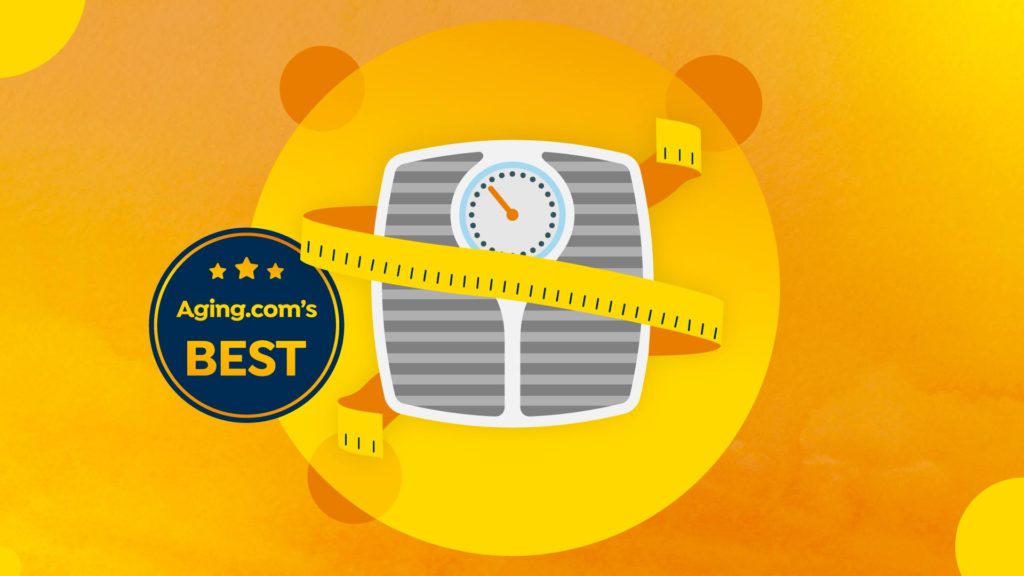
How to Improve Energy Levels as We Age

Struggling with daily fatigue that seems to be getting worse over the years? Are the activities that were once effortless now draining even when you are well-rested? Understanding how to Improve energy levels as we age becomes increasingly important after turning 40. At least 27% of the aging population struggle daily with moderate to severe levels of fatigue (Hellstrom et al., 2004, Reyes-Gibby et al., 2003, Wijeratne et al., 2007). Fortunately, there are evidence-based lifestyle changes you can incorporate to support your energy levels and help improve your quality of life.
Find What You Need
Blood Sugar
Glucose (or sugar), is the body’s preferred source of energy. We primarily increase our blood sugar by consuming foods that contain carbohydrates (or carbs). How many carbs we consume and what we choose to pair them with can significantly affect our blood sugar and therefore our energy levels.
Even if you have a healthy A1C and fasting blood sugar, it is still important to make sure you have stable blood sugar throughout the day. Healthy, consistent blood sugar levels can help us maintain energy, prevent cravings and keep us satisfied for longer.
Tips for Managing Your Blood Sugars
Choose Your Carbs Wisely
All carbohydrates are broken down into sugar. This means that brown rice and candy are both going to eventually end up as sugar in the bloodstream. What makes one carb “better” than another are its nutrients and fiber content. Carbs that have been processed and lack fiber are more likely to spike your blood sugar at a quicker rate. This spike can result in an unwanted crash in your blood sugar and energy levels. Emphasize complex carbs in your diet that come from whole foods, such as potatoes, fruit, oatmeal and beans. Watch out for sneaky foods that contain more carbs and sugar in fewer bites, like dried fruit.
Be mindful of how many carbs you are consuming in one sitting. The typical amount of carbs recommended in a meal for women is about 30-45 grams and for men about 45-60 grams. Aim for around 15-30 grams of carbs at snacks. Remember, these are general guidelines and to consult with your dietitian for more individualized recommendations based on your physical activity level, health status and more.
Emphasize complex carbs in your diet that come from whole foods, such as potatoes, fruit, oatmeal and beans.
Combine Carbs, Proteins and Fats
In order to sustain controlled blood sugar levels, it is imperative to slow down the rate at which the carbs break down into sugar and enter the bloodstream. Protein and fat help to slow down digestion which contributes to longer-lasting energy, controlled cravings and a balanced mood. Make sure every time you are consuming a carb to pair it with a lean protein or healthy fat. Examples of lean proteins include chicken, tilapia and tofu. Incorporate healthy fats such as avocado, nuts, seeds and olive oil.
It is also important to remember not to forget the carbs. Consuming a meal without any carbs may make you feel full, but a few hours later you may experience lower energy and increased cravings due to the lack of sugar in your blood.
Pair complex carbs with lean proteins and healthy fats.
Incorporate More Fiber
Fiber also helps to slow down digestion which promotes balanced blood sugar levels. The daily recommended amount of fiber is 25 grams for females and 38 grams for males. Increase your chances of hitting these requirements by trying to incorporate 2-3 cups of vegetables and 2 cups of fruit into your daily routine. Aim to make at least half of your grains, whole grains and include more berries, nuts, avocados, beans and lentils in your diet.
Aim to get 25 grams of fiber (female) or 38 grams of fiber (male) to slow down digestion and promote balanced blood sugar levels.
Eat every 3-4 hours
While overeating can cause an undesirable blood sugar spike, on the other hand not eating enough can result in low blood sugar levels and therefore low energy. Typically, eating a balanced meal or snack every 3-4 hours helps maintain blood sugar levels. Remember, it is different for everyone and what works one day may be different the next day due to physical activity and health status. If you are hungry before 3-4 hours, honor your hunger cues and consume a balanced snack to further maintain blood sugar. If you are more physically active, you may want to eat about every 2-3 hours depending on the intensity of your workouts. Schedule your meals and snacks in advance to ensure you are able to pair a carb with a protein and fat.
Plan your meals and snacks in advance to ensure you are able to eat about every 3-4 hours to ensure stable blood sugars and energy levels.
Pay attention to hunger cues.
Hunger may not always present itself as that stomach rumbling sensation. A variety of factors can make it more difficult to recognize hunger, such as lack of sleep, stress and caffeine. By the time you actually feel “hungry”, it may be too late. Pay attention to other cues that your body is signaling hunger to you, such as brain fog, low energy, feeling irritable or developing cravings for sugar or carbs. Make sure to eat a balanced meal or snack if you notice any signs your blood sugar may be dropping.
Signs you may need to eat a balanced meal or snack include:
- Brain fog
- Low energy
- Cravings carbs or sugar
- Feeling irritable
- Feeling weak
Pay attention to other cues that your body is signaling hunger to you, such as brain fog, low energy, feeling irritable or developing cravings for sugar or carbs and make sure to eat a balanced meal or snack.
Hydration
Hydration is crucial for maintaining energy levels. Studies show that even mild dehydration, such as 1–3% fluid loss, can impair energy, mood, and brain function (Riebel and Davy, 2013). Signs that you may be dehydrated include dry mouth, dark urine, low energy, and dizziness. Water needs can vary from person to person and may also vary from one day to the next depending on physical activity, health status and more. It is recommended that females get about 11.5 cups (2.7 L) and males get about 15.5 cups (3.7 liters) of fluids per day. While these requirements may seem like a lot, these needs are not only fulfilled by fluids but also by foods with water content. Aim for drinking at least 8 cups (or 64 oz.) of water a day.
Hydration is crucial for energy levels. Females should aim for 11.5 cups of water daily and males should aim for 15.5 cups daily, from both beverages and food.
Deficiencies
Some of the most common causes of chronic fatigue are vitamin and mineral deficiencies. These deficiencies can contribute to symptoms of low energy, weakness, and muscle fatigue. It is crucial to get labs done with your physician before taking supplements. Some common deficiencies that contribute to low energy are iron, magnesium, Vitamin D, and B12. Iron is important for transporting oxygen around the body. Without enough iron, symptoms can range from tiredness and weakness to a weakened immune system and impaired brain function. Magnesium deficiency is fairly common and can cause low energy and fatigued muscles. The most common deficiency in the US is Vitamin D. Vitamin D deficiency can cause symptoms such as weakness and fatigue. One of the most important nutrients for energy is Vitamin B12. Symptoms of a Vitamin B12 deficiency may include fatigue, brain fog and headaches. While B12 deficiencies aren’t as common in the US, if there is a deficiency, injections may be needed.
Nutrient deficiencies are a common cause of fatigue and weakness. Before supplementing, check with your physician.
Food Allergies and Intolerances
Food allergies and intolerances can cause a wide array of unpleasant symptoms including brain fog and low energy. Food allergies usually produce symptoms immediately or within a few hours and are accompanied by symptoms such as swelling, itchiness, rashes, and GI distress. Common food allergies include peanuts, milk, shellfish, wheat and soy. You can detect food allergies by working with your doctor to get an IgE test. On the other hand, intolerances can produce symptoms that can occur within a few hours to a few days and may take a couple of weeks to see improvements once it is eliminated from your diet. Symptoms of intolerance include GI problems, headaches, nausea and bloating. Common intolerances include gluten, lactose, caffeine and sulfites. The most effective way to pinpoint a food intolerance is by keeping a food journal. Write down when and what you eat along with any negative symptoms you experience. Work with a dietitian to start an elimination diet and find the root of your symptoms.
Food allergies and intolerances can cause brain fog and low energy. Discover your food allergies with a blood test and food intolerances with a food journal.
Stress
In small doses, stress is beneficial and necessary, but too much stress can result in chronic fatigue. An increase in the stress hormone, cortisol can come from a variety of factors such as an imbalance in blood sugar, lack of sleep and a sedentary lifestyle. It can be difficult to reduce stress, but start by making simple changes such as practicing mindfulness, eating a balanced diet, sleeping 7-8 hours a night and engaging in at least 30 minutes of exercise a day.
Start by making simple changes to reduce stress and improve energy levels, such as practicing mindfulness, eating a balanced diet, sleeping 7-8 hours a night and exercising daily.
Diets
Our daily dietary choices directly affect our energy levels. Here are some of the most common diets and how they may influence fatigue.
Low Carb Diet
A low-carb diet can cause low energy due to low blood sugar. Low blood sugar can cause intense sugar cravings, irritability and more.
Benefits: Can help lower A1C and simple rules to follow
Negatives: Low blood sugar can lead to intense cravings, binging and it’s not sustainable
Juice Cleanse
Consuming only juices can cause an imbalance in blood sugar leading to energy spikes and crashes. Juices contain mostly carbohydrates, and not enough protein, fat or fiber to slow down digestion.
Benefits: Can help someone reset, especially if exposed to a food allergy or intolerance
Negative: Lack of protein, fat and fiber to slow down digestion
Plant-Based Diets
It can be complicated to ensure you are getting enough protein and not too many carbs when following a vegetarian or vegan diet. If you are struggling to include enough protein into your diet, there are plant-based protein supplements such as pea protein which can help you meet your needs. Make sure to incorporate high protein options such as soybeans, lentils, and beans.
Benefits: Can decrease cholesterol and simple rules to follow
Negative: Can be easy to have too many carbs and too little protein
Whole 30/Paleo
A whole 30 or paleo diet allows for a balanced diet of carbs, proteins, and fats to help balance blood sugars and energy levels. However, it can be restrictive and not a sustainable long-term option.
Benefits: Allows for a balanced diet which can help with energy levels
Negative: Can be too restrictive
A Balanced Day of Eating For All Day Energy
Breakfast: Veggie Omelet Hash
- Omelet with low-fat cheese and chopped veggies
- Sweet potato, cubed and roasted in olive oil
Snack: Fruit & Nuts - Mixed Berries
- Almonds
Lunch: Ground Turkey Bowl
- Lean ground turkey
- Avocado, sliced
- Brown Rice
- Green beans
Snack: Parfait
- Nonfat plain Greek yogurt
- Mixed Berries
- Nut butter
Dinner: Salmon & Veggie Bowl
- Salmon
- Pesto
- Quinoa
- Asparagus
*Energy and nutrient requirements may vary
Content on this site is for reference and information purposes only. Do not rely solely on this content, as it is not a substitute for advice from a licensed healthcare professional. Aging.com assumes no liability for inaccuracies. Always read labels and directions before using a product or prescription.



